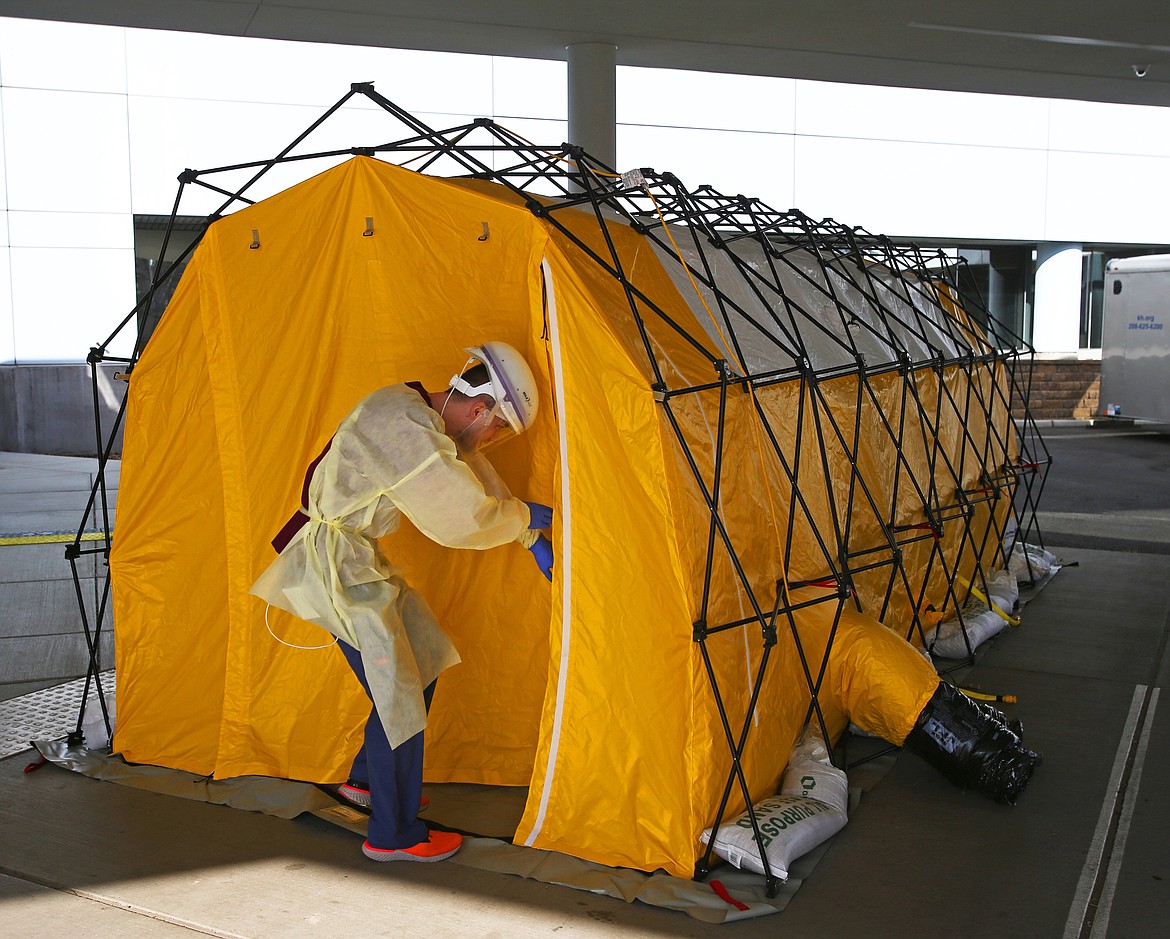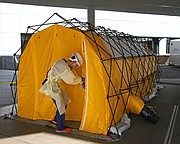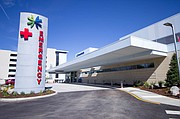BRACED FOR A SURGE Kootenai County appears ready for whatever virus dishes out
COEUR d’ALENE — As doctors, politicians and health officials acknowledge that America will likely see the worst of the coronavirus pandemic in the weeks to come, health care workers are reporting calamitous conditions in our larger metro hospitals.
While urban hospitals are taking the brunt of the coronavirus’s wrath — with many medical centers planning contingencies that range from clearing out departments for additional intensive care patients to erecting makeshift field hospitals at nearby parks — hospitals in smaller communities haven’t seen the overwhelming numbers of patients that some metropolitan areas are already enduring.
So how bad will it get for Kootenai Health?
“Every hospital creates a plan for what to do with a sudden influx of patients, called a surge plan,” Kootenai Health spokeswoman Andrea Nagel said Monday. “This plan can be adapted in instances such as a busy flu season, a mass casualty incident, or in preparation for an epidemic event such as COVID-19.”
That plan includes coordination between Kootenai Health, Panhandle Health District and county leaders to manage what’s known as the incident command system, a strategy set in place weeks ago.
The hospital, health district, the Kootenai County Emergency Management System, Kootenai County Sheriff’s Office, local police departments and the Office of Emergency Management train twice a year for worst-case scenarios.
The coronavirus certainly qualifies as one.
The Institute for Health Metrics and Evaluations, a University of Washington-built medical data center based in Seattle, released updated numbers over the weekend that predict Idaho will see far fewer deaths and hospitalizations than other populated states.
The IHME believes that Idaho will require — at its predicted April 14 peak — 151 of the state’s 1,817 available hospital beds for COVID-19 patients. Coincidentally, the state also has 151 beds set aside for intensive care units; IHME predicts the state will need no more than 31 of these particular beds, as well as 26 invasive ventilators.
IHME statisticians predict 69 Idahoans will die from the coronavirus between now and Aug. 1.
Nationwide, IHME predicts 81,766 coronavirus-related deaths by Aug. 4. The CDC and the White House have previously predicted between 100,000 to 240,000 deaths.
For now in Kootenai Health, all’s quiet on the western front.
“We’re not currently seeing any staffing issues, as we haven’t seen an influx in patients,” Nagel said. “Our day-to-day operations have seen little change aside from preparation and COVID-19 testing.”
Local coronavirus testing started as a barely used yellow tent put up near the emergency room entrance in early March. Today, a steady stream of drive-through patients circle through a clinic on the west side of Kootenai Health. As of 4 p.m. Monday, 42 people have tested positive for the coronavirus in Kootenai County. Those tests have also been a source of consternation among residents concerned that local resources cannot account for or support the county’s population experiencing symptoms.
The third tier of testing priorities is set aside for critical infrastructure workers with symptoms, health care workers and first responders, individuals with mild symptoms in communities experiencing a surge in COVID-19 hospitalizations and a member of the general public who experiences symptoms.
Individuals without symptoms who are not working in health care or as first responders are not, per the CDC, considered a priority.
Hoyer said the delay in getting test results back — a delay that once took as long as a week to 10 days before the testing was analyzed — has generally subsided and most are getting back from the Idaho Bureau of Laboratories of the Mayo Clinic in about three to four days.
“We have experienced periods with shortages or restrictions on testing and may in the future,” Panhandle Health spokeswoman Katherine Hoyer said, “but we can currently recommend testing for those who need it.”
Hoyer added that not everyone who is sick needs testing, and that many who contract COVID-19 experience only mild symptoms and are able to recover from home.
She cited the Centers for Disease Control’s guidelines for testing, which state that hospitalized patients and health care facility workers with symptoms are deemed the highest testing priority. The second priority group is patients in long-term care facilities who are experiencing symptoms, patients 65 and older who are experiencing symptoms, patients with underlying conditions experiencing symptoms, and first responders
Even when those numbers spike, Kootenai Health is probably capable of handling the crisis, statistically speaking. The hospital has 330 beds under normal conditions. Nagel said their surge plan could include an off-site field hospital.
“We know we may have to shift other areas of the hospital to accommodate more,” she said.
The area’s rural atmosphere has so far given Kootenai County a statistical advantage in the fight against COVID-19.
“Being that we’re in a smaller, more spread-out community and we’re able to prepare and implement suppression strategies early, it does seem we’re seeing fewer cases,” she said.





